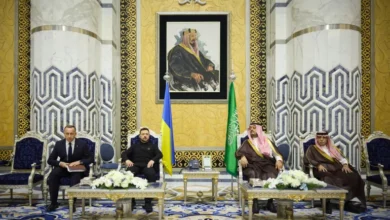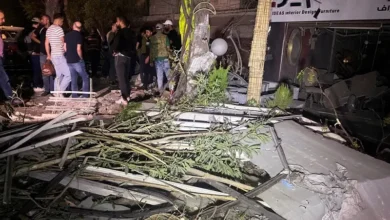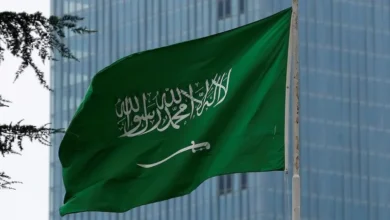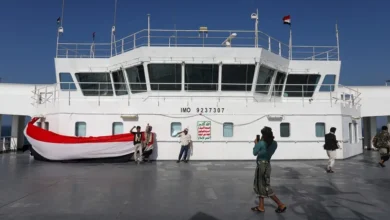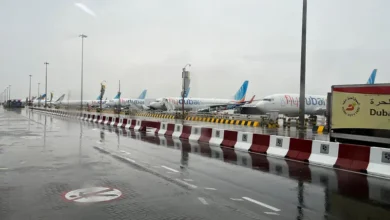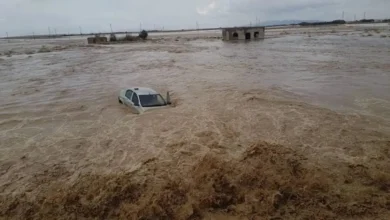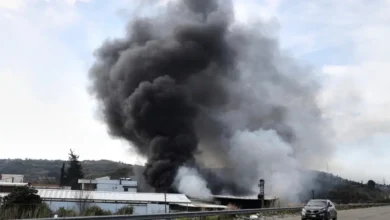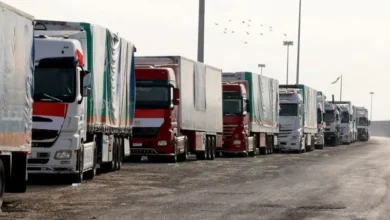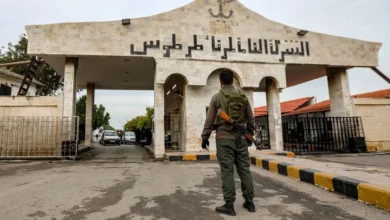Israeli forces battle Hamas militants in southern Gaza
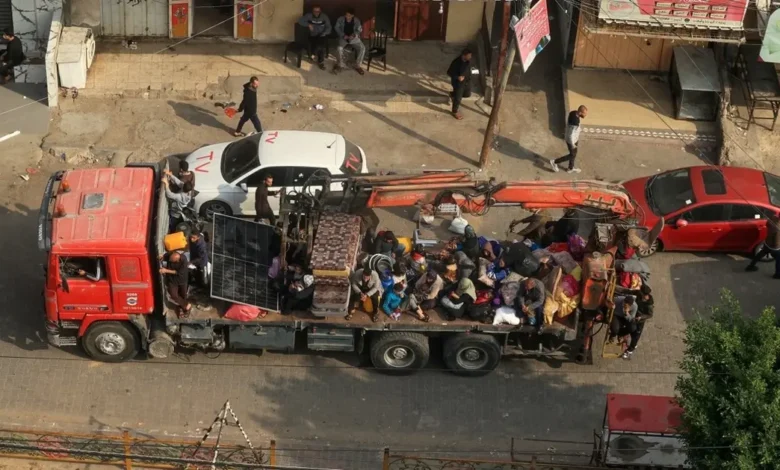
Israeli forces battled Hamas militants in southern Gaza on Tuesday, prompting a UN warning of an “even more hellish scenario” as fighting pushes civilians into a steadily shrinking area of the besieged territory.
After initially focusing its assault on the north of Gaza, the army has now sent ground forces into the south and dropped leaflets telling Palestinian civilians in more districts to evacuate.
Israeli tanks, armored personnel carriers and bulldozers were seen on Monday near the southern Gaza city of Khan Younis, which is packed with displaced civilians, witnesses said.
The Israeli army said it was taking “aggressive” action against Hamas and other militants in Khan Younis, warning that the main road in the north and east of the city “constitutes a battlefield.”
Hamas claimed via Telegram its militants had targeted two personnel carriers and a tank near Khan Younis.
Its military branch also said it had fired rockets towards Beersheba in southern Israel on Tuesday, while the Israeli military said rocket warning sirens sounded there.
Israel declared war on Hamas after the militant group’s October 7 attacks that killed 1,200 people, mostly civilians, and which saw around 240 hostages taken, according to Israeli authorities.
In retaliation for the worst attack in its history, Israel has vowed to eradicate Hamas and secure the release of all the hostages held in the Gaza Strip.
The Hamas-run health ministry in Gaza says the war has killed nearly 15,900 people in the territory, around 70 percent of them women and children.
‘Nowhere safe’
International aid organizations have warned that civilians in the densely populated Strip are running out of places to flee to.
“Nowhere is safe in Gaza and there is nowhere left to go,” said Lynn Hastings, UN humanitarian coordinator for the Palestinian territories.
“If possible, an even more hellish scenario is about to unfold, one in which humanitarian operations may not be able to respond,” Hastings said in a statement.
Ambulances, trucks and other vehicles delivered more bloodied, dust-covered casualties to Khan Younis’s Nasser hospital, including children.
After visiting another medical facility in the city, the European Hospital, International Committee of the Red Cross president Mirjana Spoljaric said she saw horrors that were hard to describe.
“What shocked me the most were the children with atrocious injuries and at the same time having lost their parents with no one looking after them,” she said in a video.
“We can’t turn away from what is evidently a moral failure in the face of the international community,” she added.
Their belongings piled onto donkey carts, battered vehicles and even camels, Gazans headed south to try to escape the expanding Israeli offensive.
An estimated 1.8 million people are displaced in Gaza — roughly three-quarters of the population, according to UN figures.
An Israeli order for people to move from Khan Younis to the southern city of Rafah “created panic, fear and anxiety,” according to Philippe Lazzarini, head of the UN agency for Palestinian refugees (UNRWA).
People were being pushed into an area that is less than one-third of the Gaza Strip, with roads to the south clogged, he said.
Even in Rafah, resident Abu Jahar al-Hajj said an air strike near his home felt “like an earthquake.”
“Pieces of concrete started falling on us,” he said.
Three more Israeli soldiers were killed in fighting in the territory, the army said on Tuesday, raising the number of troop deaths there to 78.
The military denied telling the World Health Organization (WHO) to empty an aid warehouse in southern Gaza within 24 hours before ground operations in the area render it unusable.
WHO chief Tedros Adhanom Ghebreyesus earlier wrote on social media platform X that his organization had received a notification from the army “that we should remove our supplies from our medical warehouse in southern Gaza within 24 hours.”
Communications blackout
Key ally the United States has cautioned Israel to do more to avert civilian casualties as operations shift to the south.
Israel on Monday said it was not seeking to force Palestinian civilians to permanently leave their homes, but that it was instead seeking support from aid groups to improve infrastructure in a tiny coastal area of Gaza named al-Mawasi.
“We have asked civilians to evacuate the battlefield and we have provided a designated humanitarian zone inside the Gaza Strip,” Israeli military spokesman Jonathan Conricus said.
As well as dropping leaflets, the army has been warning civilians in Gaza to leave certain areas ahead of impending strikes via messages to mobile phones.
But on Monday, all mobile and telephone services were cut across Gaza “due to the cut-off of main fiber routes from the Israeli side,” according to Palestinian telecommunications firm Paltel.
Global network monitor Netblocks confirmed Tuesday that Gaza residents were experiencing “a total loss of communications.”
The fighting follows the collapse on Friday of a Qatar-mediated truce that saw scores of Israeli and other hostages released in exchange for Palestinian prisoners.
According to the Israeli military, at least 137 hostages are still being held in Gaza, but Hamas has ruled out more releases until a permanent ceasefire is agreed.
Qatar’s ruler, Sheikh Tamim bin Hamad Al-Thani, denounced what he called “shameful” international inaction over the war as he opened a Gulf Cooperation Council meeting.
The war has sparked fears of a wider regional conflict, with frequent exchanges of fire with Iran-backed Hezbollah across Israel’s border with Lebanon.
On Tuesday, the Israeli military said its fighter jets had struck Hezbollah positions in response to launches on Monday from Lebanon into Israel.
The Israel-occupied West Bank has also seen a surge in violence, with more than 250 Palestinians killed there since the war began, according to Palestinian authorities.
